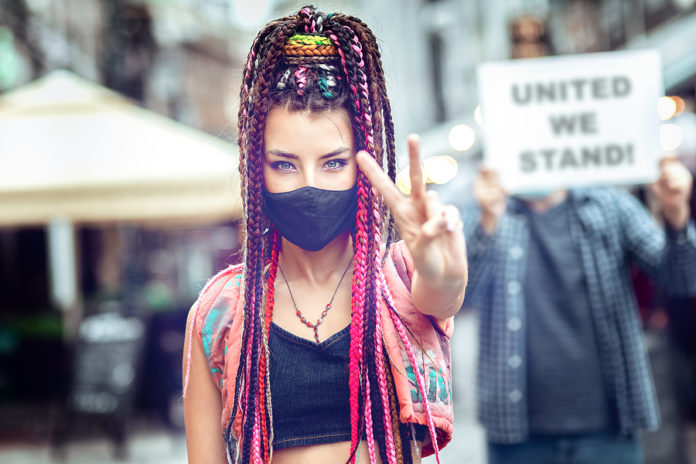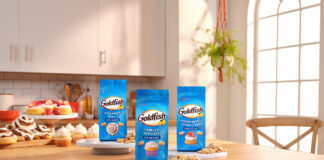
By Audra Nebolini, CBX
Every food marketing brief for the past decade has used the word “Millennial,” along with the message that this generation demands new products and experiences to make life better.
In the realm of brand strategy and design, “Millennial picture-perfect”—characterized by clean lines, mood gradients, and highly stylized lifestyle images for Instagram—became the norm.
But has anybody noticed that Millennials are about to be eclipsed by a new generation?
This year, Gen Z crossed the milestone of becoming the largest group of consumers on the planet, according to GenGuru. And yet here we are two months into 2021 and I have yet to see the term “Gen Z” in a new brief. Maybe the reason, given the strong contrast between Millennials and Gen Z, is that cracking a new generational code seems too intimidating for food manufacturers and retailers.
It shouldn’t. We’re already seeing clear themes emerge from within this consumer segment. Let’s dig a bit deeper to see what drives them—and how decoding Gen Z can translate into more effective and purposeful brand strategy and design.
Break down barriers
While they do like simplicity, members of Gen Z also want to break down barriers. Gender fluidity is a case in point. It’s why our firm has started using what we think of as “Gen Z Yellow”—an optimistic, bright, natural color that is genderless and quite distinct from the familiar “Millennial Pink.” Gen Z wants inclusive and informative content, but that content still needs to feel real, personal, and casual. They’re all about being to the point and questioning—and overcoming—societal norms and limitations, with no borders or seams. These are qualities that readily translate into design, as with borderless, edge-to-edge graphics in a continuum.
Forget about a grid system: Gen Z prefers the freedom of asymmetry.
Empower your audience
Gen Z wants something to believe in, which is why they respond to a call to action. Bold and declarative typography—sharp and purposeful, not only in its verbal tone but also in its visual emphasis—resonates with them. Gen Z doesn’t need an elaborate description, just a quick point. It’s either this or that. Period. They want to cut through the digital clutter being fed to them.
Experiment
Being born in a digital age, they are intrigued with more complex/abstract imagery. Mixed Media—clashing color combinations layered with texture and photographic elements that introduce new perspectives and ideas—is right in line with this. Gen Z will respond to design approaches that embrace the futuristic intersection of technology and fantasy. Dimensional forms should be kinetic and adaptive. It’s not a coincidence that 60% of TikTok users belong to Gen Z, according to Wallaroo, the digital marketing and ad agency.
Stay flexible
Millennials are famously “brand agnostic.” Gen Z values the tried and true. They appreciate craftsmanship and corporate missions but also want those brands to stay relevant to them. That’s why it’s so important to show that you share their commitment to diversity, aim to fight global climate change, and are flexible enough to evolve right along with them.
Embracing flexible branding is one way to communicate the latter message. It’s an approach in which visual equities flow and change as needed, while still retaining the core identity of the brand. A great example of this is the logo for the 2028 LA Olympics. Over the course of a minute-long animation, the “A” in LA repeatedly changes form to show the dynamism and diversity of the city.
Brands connecting with Gen Z will need be true, innovative, and authentic. It’s not a question of “who shouts the loudest or looks the prettiest.” They despise being sold to, and because they are “always-on,” they can and will call out the fakes in a matter of seconds.
There’s nothing wrong with Millennial picture-perfect (like those whipped Dalgona coffees that were so popular this past spring), but Gen Z wants social change. For them, reality is real, and people matter. If you discover purpose, embrace change, and push the envelope, they’ll be right there with you
 Audra Nebolini is an Associate Creative Director in the New York office of brand strategy and design consultancy CBX. She has worked with a Who’s Who of top brands such as Cadbury, PepsiCo and Hain Celestial on identity, strategy, packaging, innovation, environment, retail and activation; [email protected]
Audra Nebolini is an Associate Creative Director in the New York office of brand strategy and design consultancy CBX. She has worked with a Who’s Who of top brands such as Cadbury, PepsiCo and Hain Celestial on identity, strategy, packaging, innovation, environment, retail and activation; [email protected]







